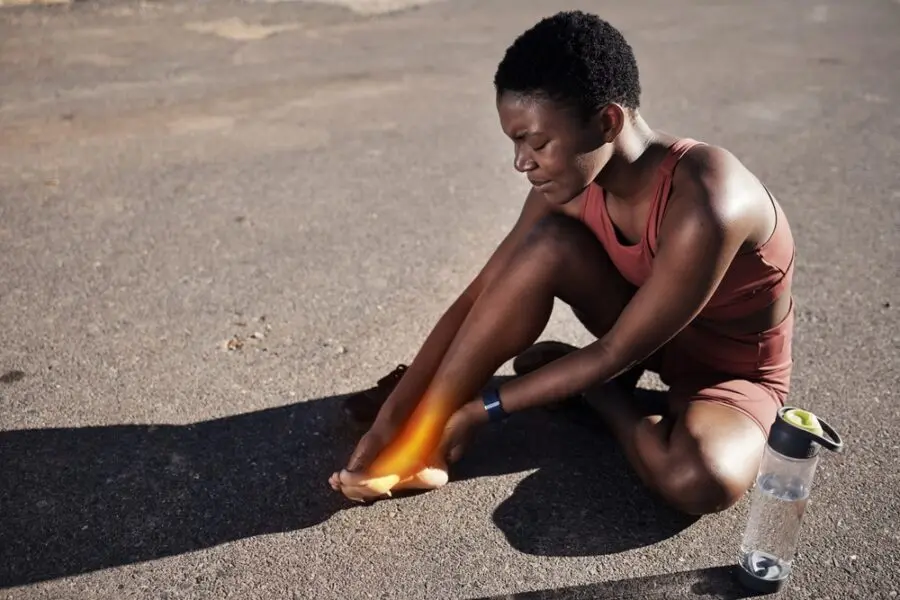
It is common to talk about cold feet, heavy legs after a long day, or tingling in the legs – that unpleasant feeling that makes you fidget. Although less well known, hot feet syndrome or burning feet are just as uncomfortable. Walking and even the capacity to focus on a task can be impacted by a burning or hot sensation underfoot. It is thus important to identify the cause in order to alleviate the discomfort associated with hot feet.
What are hot feet?
When we refer to “hot feet,” we do not mean “heat-related to a high room temperature” or “heat-related to shoes that are too warm.” Hot feet are very unpleasant and uncomfortable for the person suffering from them. It usually affects the bottoms of the feet, and occasionally there may even be a burning sensation under the foot. The skin may also itch as a result of the heat. The foot may feel swollen depending on where the syndrome originated.
In these circumstances, hot feet may be a sign of an allergy, illness, nerve, or circulation issue. Hot feet are more frequently experienced by the elderly or those with diabetes, but anyone can suffer from this condition, given the wide range of potential causes.
Do hot feet indicate a health condition?
It is not normal to have intense, incapacitating hot feet. This pain has a number of causes, ranging from outside factors to more serious pathologies.
Hot feet are frequently related to tarsal nerve compression, which can result in burning under the foot. In this situation, the toes and ankle are more likely to experience pain, which worsens when you walk.
Poor circulation can also cause hot feet; those who are sedentary or who have venous insufficiency, a condition linked to the stiffening of the veins, may experience burning in the arch of the foot.
An allergic reaction to burning under the foot may be brought on by uncomfortable shoes or socks made of the wrong fabric.
Burning foot syndrome is a pathological condition caused by inflammation that frequently affects people who have diabetes, gout, or osteoarthritis.
Unfortunately, diabetics are more likely to experience foot complications like sores that might infect, as well as discomfort and circulation issues. This is called the diabetic foot.
The burning sensation under the foot is brought on by the inflammation of the joints in the foot in cases of gout and osteoarthritis.
Keep in mind that in every situation, professional guidance will be required for proper problem-solving.
How to relieve hot feet?
Despite the fact that treating the root of hot feet requires professional assistance, the discomfort they cause can be alleviated at home.
After a long day, feet often feel heavy and swollen. Alternating between warm and cold footbaths for one minute each helps to improve circulation while also relaxing the feet. In a similar manner, you can improve blood flow by raising and extending your legs while sitting or lying down.
If your feet can handle it, self-massaging your foot’s arch will temporarily relieve your discomfort and soften the tissues in your foot. Use your thumbs to move firmly back and forth across the sole of your foot, from the toes to the heel.
Consider wearing appropriate footwear as well, preferably with a comfortable sole that supports your foot’s arch. It is not advisable to wear shoes with flat soles because they do not offer adequate support. Choose hypoallergenic socks if you must. If an allergy is the cause of your burning sensation under your foot, this will be very helpful.
Diagnosing the cause of hot foot syndrome
In some cases, maintaining your health can lower your risk of developing the hot-foot syndrome. It is wise to incorporate some exercise into your daily schedule in order to maintain a healthy weight and a balanced diet in order to prevent deficiencies and inflammation. To find out if there is an underlying medical issue, speak with your podiatrist as soon as you begin to experience these burning sensations under your foot.